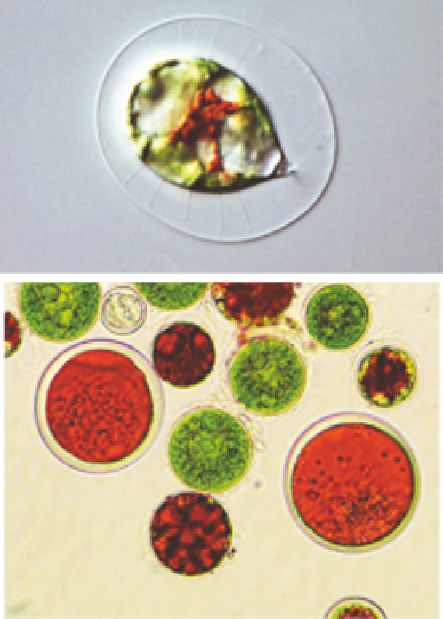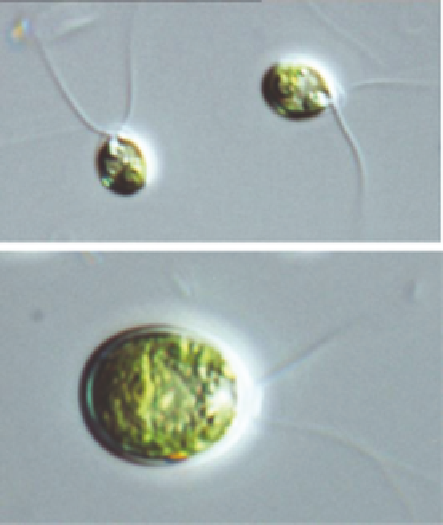Environmental Engineering Reference
In-Depth Information
10 μm
20 μm
n
10 μm
e
Figure 4.55
Chlamydomonas
. Top: Two small biflag-
ellate cells. Bottom: Large biflagellate cell showing
central nucleus (n) and cup-shaped parietal chloroplast
(arrow) with eyespot (e). DIC images from a single lake
sample. Reproduced with permission from R. Matthews.
50 μm
Figure 4.54
Haematococcus.
Top: Single motile cell
(flagella not visible) showing broad hyaline wall contain-
ing fine protoplasmic extensions (arrows). The central
pear-shaped protoplast has large vacuoles and granules of
red pigment (astaxanthin). Reproduced with permission
from R. Matthews. Bottom: Non-motile cells, ranging
from immature (green) to fully mature cysts filled with
astaxanthin.
123
(108) (a) Cellswithalonganteriorhornandtwo
orthreeposteriorhorns.......
Ceratium
Ceratium
cells are quite large and brown-
ish in colour with two or three posterior
'horns'. The shape, with the horns, is char-
acteristic. There is a narrow but prominent
transverse furrow across the middle of the
cell around which a flagellum occurs. A
second flagellum trails backwards from
the mid-region. The cell surface is covered
by a number of plates of specific shape
and arrangement. The numerous chloro-
plasts are discoid and golden-brown in
colour. Characteristic thick-walled resis-
tant cysts are produced towards the end
of the growing season.
Ceratium
com-
monly imparts a fishy odour and bitter
distributed in a range of habitats, espe-
cially small pools and ditches, often
nutrient-rich. The chloroplast is large
and cup-shaped, filling much of the cell,
with one or more pyrenoids. Two flagella
are present inserted at the anterior end,
which also has a prominent eyespot.
Non-motile palmelloid stages are known
to occur. If present in large numbers
it can impart odour to drinking water
(Palmer, 1962). Chlorophyta. Plate XVI.
Fig. 4.55.












Search WWH ::

Custom Search